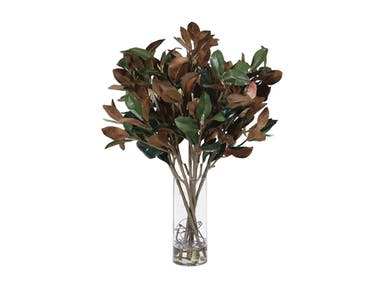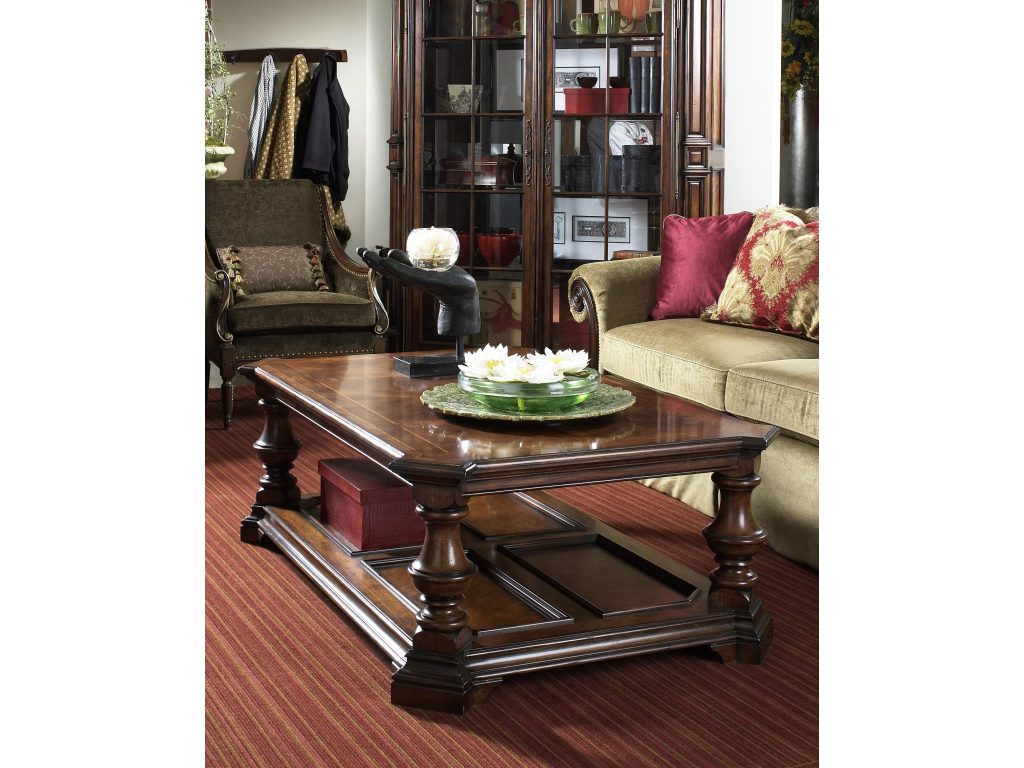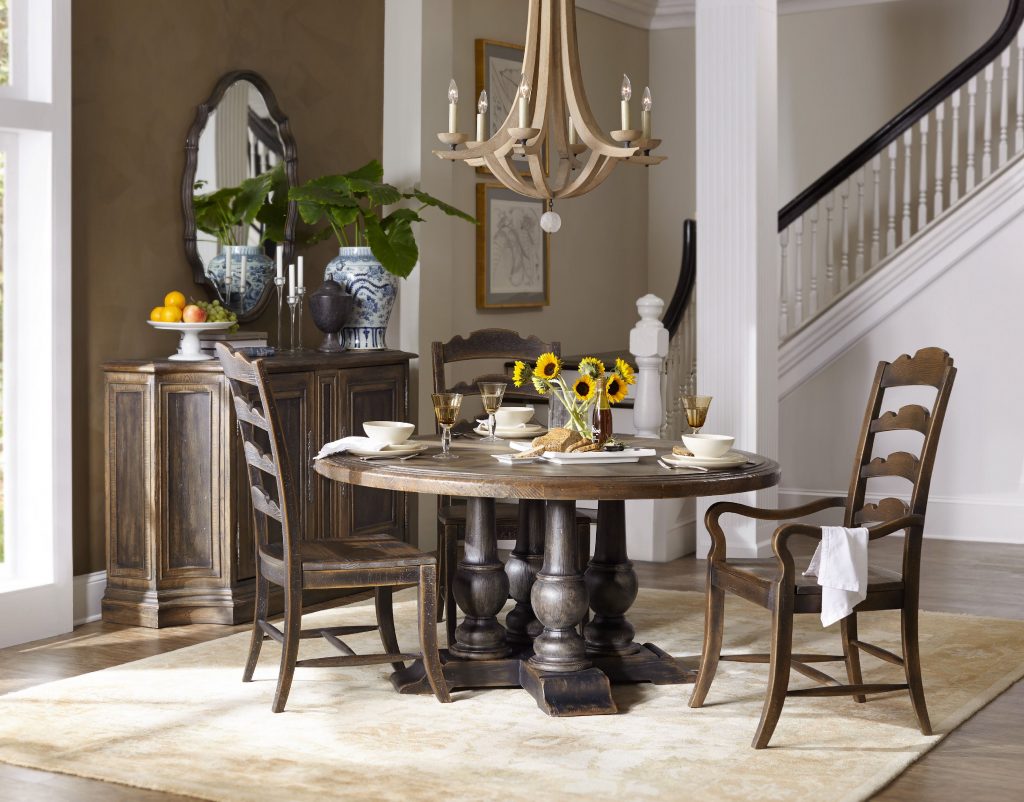Friday, June 16th, 2017

Do you think this Antebellum Double Pedestal Table has an eye-catching centepiece?
What do you think makes the dining tables on formal gatherings and events interesting? Is it the placement of the dinnerware or the lavishness of the tablecloth? Or is it the arrangement of the food on the table? If you looked close enough, you know that it’s the table centerpiece that actually made a huge difference. Even the most scrumptious meals won’t look appetizing if the centerpiece is a total blah.
Here’s what we mean –
The centerpiece is either a collection of flowers, food, candles and even simple votives. Yet these are a lot more than pieces organized at the center of the table. The centerpiece is also subjected to the laws of art and fashion. So, you would also need to consider factors such as color combination, balance, texture, etc.
A Little History
But when did table centerpieces actually begin? It was the Romans who first thought of adding decorative foliage onto their tables. Other probable centerpieces that were originally used on Roman dining tables are ceramics, vases and patterned dishes.
In the Middle Ages, there were simply too much food on the table to even accommodate a simple centerpiece. Centerpieces weren’t huge then but it was during Christmastime that they became the stars of the dining experience.
A common Christmas dinner centerpiece was made of marzipan and pastries. There were even decorative pieces that looked like animals, people or even sceneries.
By the 18th century, servants were already handing the dishes to their hostess. This meant the room had a more expansive space for table décor. Mirrors were even set up to reflect the beauty of the centerpieces.
By this time, centerpieces were triangular mounds of food that were arranged in tiers or epergnes. There were also molded jellies and pudding.
The 19th century continued the need for foliage and flower arrangements while the candelabra became an exciting addition.
The 20th century welcomed the addition of WWI decorative objects. Most of these replaced foliage and flowers during that time. Harp and green stuff were used during St. Patrick’s Day or miniature windmills were used for Dutch themes.
1960s till the 1970s were the era for flowers and greeneries.

The Uttermost Accessories Southern Magnolia Silk Centerpiece 60129 is as classic as it centerpieces could go.
Centerpiece Ideas
So, now that you know how beautiful your dining experience could get with the right centerpiece, here are some ideas that you can mull over –
Tags: centerpiece, creating table centerpiece, McCreerys, McCreerys Home Furnishings, table centerpiece, table centerpieces
Posted in Accents, Accessories, Color Schemes, Dining Room Design, Interior Design 101, Interior Design Elements | Comments Off on The Table Centerpiece: Is It Art, Fashion or a Decorative Element?
Thursday, May 4th, 2017

FFDM Viniterra Cocktail Table shows off this lovely centerpiece of thick, glass bowl with floating lotus flowers.
During formal gatherings and other important occasions, haven’t you noticed how the tables come with the most beautiful centerpieces? These can include flowers, food, candles and other decorations. Of course, the table centerpieces are based on the tastes of the person who has set the formal occasion. These can also be based on the latest fashion and accessories.
If you’re wracking your brain for ideas on how to dress up your formal table for an upcoming event, then here are some popular centerpieces that you could consider –
The Roman Centerpiece
Romans often added foliage to their tables. Other centerpieces that were popular during the Roman times were ceramic vases and rock crystal dishes. Branches and decorative leaves were also commonly used.
Centerpiece of the Middle Ages
The wealthiest people of the Middle Ages had tables that were brimming with food so there was practically no room for any centerpiece – in essence, the foods were the centerpieces. During Christmastime, however, the special food centerpieces were marzipan or pastries that were shaped like animals, decorative objects, or people.
The 18th and 19th Century Centerpieces
Service à la russe (servants giving out dishes to their hostess) were quite common during this time. They cleared more room on dining tables for decorative items. They set up mirrors that reflected the most interesting porcelain figures. Aristocrats simply loved this setup.
Vertical centerpieces were the in thing throughout the 18th and 19th centuries. These vertical table décor were made using pyramids or tiered food. These were popularly known as epergnes or molded jellies and pudding.
Flowers were added on tables in the early 19th century. By the late part of this century, foliage and flowers were fused reflecting the event theme. White flowers, for instance, were used during a winter celebration.
Candelabra were also added.
The 20th Century Centerpieces
Decorative objects slowly replaced foliage and flowers on tables during the turn of this century. These objects were, again, tied to the event theme. For example, the hostess could drape a green table runner on her dining table during Saint Patrick’s Day.
Later in this century, food, once again, became the star of formal dining tables. It was during the ‘60s and ‘70s that the flower-loving generations gave reverence to flowers and made them centerpieces once more.

Hooker Furniture Dining Room Applewhite 60in Round Dining Table: Flowers will never go out of style when it comes to centerpiece materials.
Pretty Centerpieces of Today
You must first consider the size of your coffee table, center table, or dining table. The size will dictate how much decorative pieces you can fill the table with. A wide dining table, for instance, will look awkward with a single, miniature flower arrangement.
Think also about blank space. When you are designing your centerpiece, keep in mind that a lot of plain table showing could look boring and unfinished. Make room for a large statement piece when you have a wide or round dining table.
For narrower tables, use mini centerpieces or mini vignettes.
Another aspect that you can consider is the height of your centerpiece. This is what would make the table much more interesting. Tall glass vases are interesting pieces especially when you use equally interesting flowers.
Make sure also that the table centerpiece is pretty to look at from any angle of the table. The secret here is to consider symmetry and simplicity. Never forget to add table runners since these can also add to the visual interest of your formal table.
Wedding Centerpieces
What could be easier than to set up floating candles and flowers as your centerpiece? This is a minimalist approach but it is still a gorgeous setup that won’t fail to tantalize.
Another interesting wedding centerpiece is the wrapped vase. Cut huge green leaves such as ferns or hostas. Tie these to your vase using jute string.
Tags: centerpiece, creating table centerpiece, making table centerpiece, McCreerys, McCreerys Home Furnishings, table centerpiece, table centerpieces
Posted in Accents, Accessories, Interior Design 101, Interior Design Elements | Comments Off on Table Centerpieces – Why No Formal Table Should Go Without ‘Em
© McCreery's Home Furnishings | All Rights Reserved | Privacy Policy